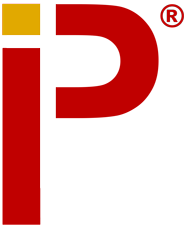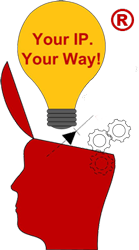Patents
A patent for an invention is the grant of a property right to the inventor, issued by the United States Patent and Trademark Office (USPTO). The right conferred by the patent grant is “the right to exclude others from making, using, offering for sale, or selling” the invention in the United States or “importing” the invention into the United States for a limited time in exchange for public disclosure of the invention when the patent is granted. Patents are territorial in that patent protection must be applied for in each country where protection is sought.
In this section you’ll find information about the following:
Taylor & Edelstein provides a complete line of IP legal services for all of your patent needs. For example, we can assist you with the following:
- Analysis of inventive subject matter to determine if proper subject matter for a patent.
- Preparation of invention disclosure materials.
- Searching of inventive subject matter for purposes of determining the patentability and/or infringement issues associated with your invention. We can search both US and foreign prior art. Typically we use the services of an outside searcher; however, we also conduct online searches ourselves when under tight deadlines or the subject matter is such that we have a particular in-house expertise.
- Patentability and/or clearance/freedom to operate opinions.
- Design around consultations in the event of troublesome third party patents.
- Full opinions related to infringement and/or validity issues associated with client patents or competitor patents.
- Assignment of patent rights to another individual or business entity.
- Determination of inventorship issues.
- Preparation and filing of patent applications with US Patent and Trademark Office.
- Prosecution of patent applications with US Patent and Trademark Office (negotiating with Examiner assigned to the patent application to obtain allowance and issuance of a patent).
- Determination of need for follow-up patent applications based on further development or improvements to base ideas covered in existing patent applications (through the use of continuation-in-part applications).
- Foreign filings of patent applications in any selected foreign countries, either as an international patent applications or direct national filings in selected countries.
- Submission of prior art against pending or issued competitor patents.
- Expanding or retracting the patent rights of patents issued to our clients.
- Due diligence studies of patent portfolios owned by third parties during potential corporate acquisitions.
- Preparation of agreements related to patents, such as confidentiality agreements, patent license agreements, employment agreements, joint venture agreements and development agreements.
- Analysis of potential patent infringement actions by third parties.
- Enforcing patent rights through litigation in Federal Court.
The Patent Process
1: Invention Disclosure
The first step in pursuing patent protection for your invention is to provide me with a disclosure of your invention. This disclosure is an attorney-client privileged communication and will only be disclosed to agents or employees of this law firm.
2: Patentability Search
After obtaining a disclosure of your invention, a search request will be sent to a searcher in Washington, D.C., who will typically conduct a computerized and a manual search in the records of the U.S. Patent Office.
3: Preliminary Non Infringement Analysis
If you are anticipating manufacturing or selling product corresponding to your invention, it is suggested that any unexpired patents developed by the patentability search also be reviewed for potential infringement problems associated with patents owned by third parties.
4: Patent Application
If the results of the patentability search determine that your invention is patentable in light of the discovered references, and you wish to proceed in pursuing patent protection, a patent application will be prepared based upon your invention disclosure to me. Additional information in the form of drawings, test data, etc., may also be required depending upon the particular invention.
5: Patent Prosecution
Almost always, a patent application will be initially rejected based upon either informalities and/or patents developed by our search or a separate search conducted by the Examiner. After filing the response to the first Office Action, the Examiner will again examine your application in light of the arguments set forth in the response.
6: Payment of Issue Fee
After your application has been allowed by the Examiner, it will be necessary to pay a government issue fee for your application to actually issue as a U.S. patent. Most likely, formal, inked drawings will also be prepared and filed along with the issue fee.
7: Issuance of Patent
A patent typically issues about two to three months after payment of the issue fee. A utility patent has a term of 20 years from the first effective filing date of the application. In the event of a continuation application, the term is thus 20 years from the filing date of the first application filed in the U.S. Patent Office.
8: Maintenance Fees
After a utility patent has issued, the government requires payment of maintenance fees during the third, seventh and eleventh years of the patent. The amount of the maintenance fees escalate each time.


